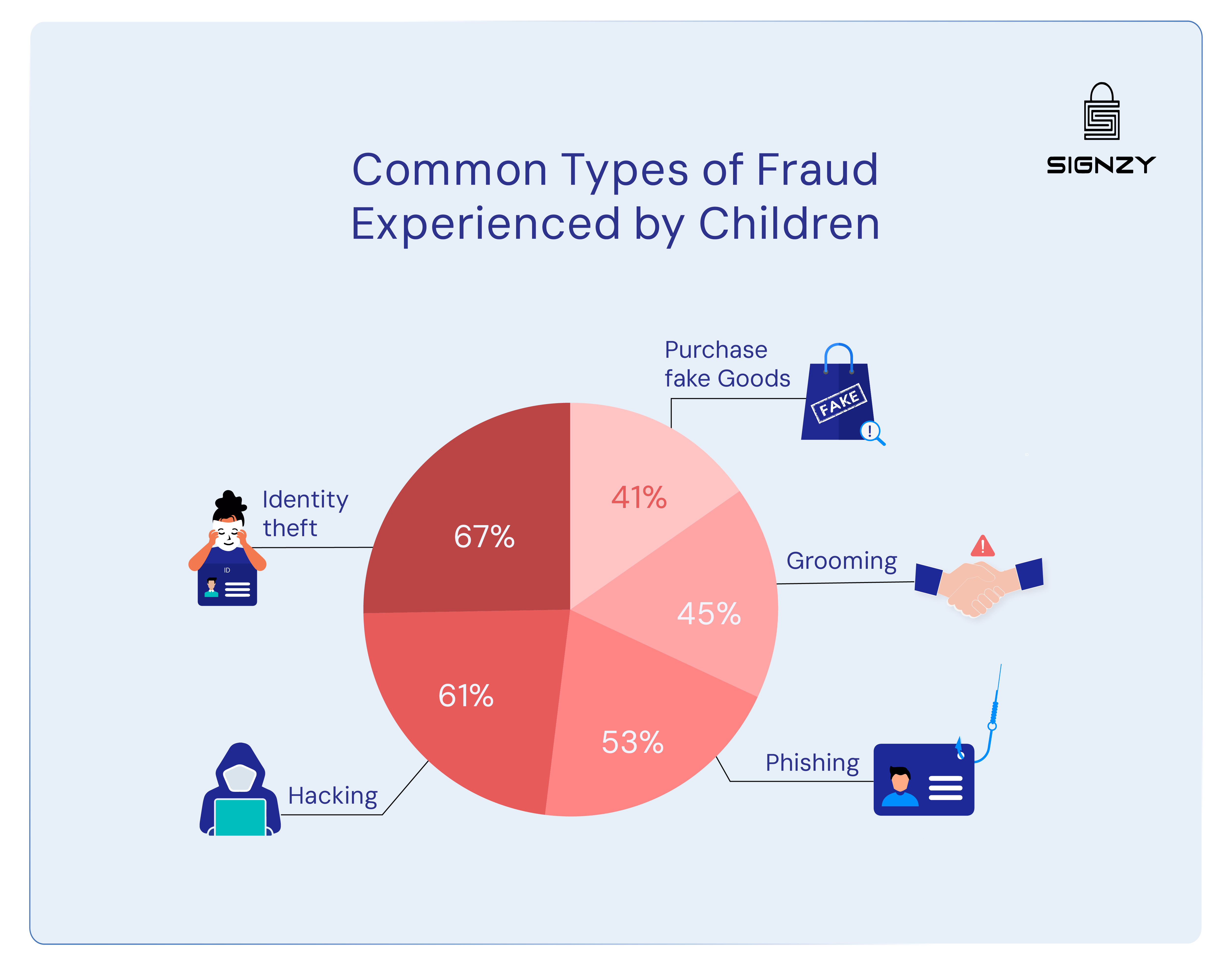Identity Verification for Gaming Platforms – Complete Guide [2025]
July 29, 2025
7 minutes read
- Gaming platforms are required to immediately block accounts flagged for stolen
identity and report incidents to authorities. - Platforms must comply with GDPR in Europe, CCPA in California, and various
local data protection laws that govern how they collect, store, process, and delete
identity verification data.
Gaming platforms get hit with identity theft more than almost any other fraud – 67% of fraud attempts involve someone using stolen or fake identities to create accounts.
| For designer: [FRAUD TYPES CHART HERE] – data and source |
I’ve watched gaming operators deal with this challenge for years: players expect to jump into games within seconds of signing up, but you need to verify they’re actually who they claim to be.
Fraudsters have figured out that gaming sites prioritize quick onboarding, so they exploit it. They show up with fake IDs, stolen documents, and completely fabricated identities, knowing there’s pressure to process signups fast.
The thing is, you can block most of these attempts without making legitimate players jump through hoops. Smart identity verification happens while users are setting up their profiles – they barely notice it’s happening.
I’ve put together the fundamentals and identity verification solutions that gaming platforms can use to solve this problem.
Before anything, let’s first understand the “why” behind all this.
Why Identity Verification Is a Must for Gaming Platforms
As gaming platforms scale, so do the risks tied to who’s joining and what they’re doing. Whether it’s a mobile game, casino app, or MMO, identity verification helps keep your platform secure, compliant and trusted.
Most platforms face two major challenges:
1. Keeping underage players out of restricted content
If your game has a chat, in-game purchases, or mature content, you need to check the player’s age and be able to prove it. This helps protect minors and follow online safety laws. The Children’s Online Privacy Protection Act (COPPA) is a US law for platforms aimed at kids under 13 or those who collect their data. It says you must:
- Requires verifiable parental consent before collecting or using children’s data.
- Platforms must provide a clear privacy policy, describe data collection and use, and give parents access to review or delete their child’s information.
- Limit data collection to what’s reasonably necessary for the service.
Failing to meet these obligations can lead to fines, app store bans, and even criminal charges in some cases.
| Note: States like California, Virginia, and Colorado have their own privacy laws that may extend protections to users under 16. Check local rules if your platform operates nationally. |
For game developers and publishers, this makes it essential to have age verification systems that not only work globally but also meet regional legal standards.
2. Blocking fraud, fake signups, and banned users
Fraud is becoming a serious problem in online gaming. Between 2022 and 2024, fraud in the online gaming sector increased by 64% year-over-year on average. This isn’t just about stolen points or fake accounts. It’s a real threat to your platform’s reputation and bottom line.
Strong identity verification helps address the following:
- Fake signups: Block bots and prevent new user bonuses from being misused.
- Multi-accounting: Reduce farming and matchmaking abuse by tying accounts to real users.
- Ban evasion: Keep previously flagged or banned users from sneaking back in.
- AML (Anti-Money Laundering) risks: Games with in-game currencies, token trading, or real-money economies often fall under FinCEN (US Financial Crimes Enforcement Network) guidance and may need to comply with AML obligations.
The best way to reduce these risks is to confirm user identities upfront and monitor ongoing behavior. With that said, let’s now see some ways you can implement it.
Identity Verification Methods for Gaming Platforms
Gaming companies can use several identity verification methods depending on the level of risk and local laws. Here’s how the main approaches work.

Document Verification
Start with collecting and verifying government-issued IDs. Players upload a photo of their driver’s license, passport, or national ID card. OCR (Optical Character Recognition) technology extracts the text data automatically – names, dates, ID numbers – so there’s no manual typing required.
The system then runs security checks: verifying document formats, checking for tampering, analyzing image quality, and detecting if someone’s photographed a screen instead of holding an actual document. Machine learning models trained on thousands of real documents can spot fakes, alterations, and even sophisticated forgeries.
Biometric Checks
This means checking that the person matches their ID photo. Players take a quick selfie, and the system compares it to their document photo. It catches people using borrowed or stolen IDs pretty effectively.
Some platforms use liveness detection, too – asking users to blink or turn their heads slightly to prove they’re not just holding up a photo of someone else.
Database Checks
Behind the scenes, verification systems cross-reference uploaded information against government databases, credit bureaus, and fraud databases. This catches synthetic identities – fake profiles created by combining real and fabricated information.
Age Verification
Gaming platforms need bulletproof age checks since underage gambling violations come with severe penalties. This goes beyond just checking the birth date on an ID – it involves verifying the document itself is legitimate and that the person presenting it is actually the person in the photo.
Multi-Layered Identity Strategies
The reality is that no single method catches everything.
It is preferred to include two or more verification methods within your onboarding flow. Here’s an example workflow:
Stage 1: Document Upload → Player uploads government ID, OCR extracts data automatically
Stage 2: Selfie Verification → Quick selfie comparison against document photo using facial recognition
Stage 3: Database Cross-Check → System verifies extracted data against official databases and fraud lists
Stage 4: Liveness Detection → User blinks or turns their head to prove they’re not using a photo
Stage 5: Final Approval → All checks pass, account gets verified within 60 seconds
This layered approach catches different types of fraud at each step. Fake documents fail at Stage 1, stolen IDs get caught at Stage 2, synthetic identities are blocked at Stage 3, and photo spoofing attempts don’t make it past Stage 4. Overall, you can filter out most of the bad actors with such workflows.
Getting Started With Out-of-the-Box Identity Verification Solutions
Building identity verification from scratch is like reinventing the wheel – technically possible, but why would you? Most gaming platforms need verification up and running quickly, not a two-year development project.
The most innovative approach is API-driven verification. Well, there are a few good reasons:
- You get professional-grade document scanning, biometric matching, and database checks without building any of it yourself.
- APIs integrate directly into your existing signup flow – players barely notice the verification happening while they’re setting up their gaming profiles.
- API solutions also scale automatically. Whether you’re processing 100 signups or 10,000 daily, the infrastructure handles the load without you managing servers or worrying about uptime.
We’ve seen gaming platforms struggle with verification that either blocks too many legitimate players or lets too much fraud through. Signzy’s APIs are explicitly built for this balance – fast enough to keep players engaged and thorough enough to catch sophisticated fraud.
You can book a demo here if you are looking to test our gaming verification APIs in your environment.
@disha.raut@signzy.com
_Assigned to disha.raut@signzy.com_
FAQs
1. What happens if a player's identity verification fails?
Players typically get clear feedback on why verification failed and instructions to resubmit the correct documents. Appeals processes handle edge cases and technical errors.
2. Do gaming platforms need different verifications for different countries?
Yes, verification requirements vary by jurisdiction. Global verification solutions support multiple document types and comply with local gaming regulations automatically.
3. What's the difference between KYC and identity verification for gaming?
Identity verification confirms who someone is. KYC (Know Your Customer) is broader, including ongoing monitoring, source of funds checks, and compliance reporting.
4. How do gaming platforms handle verification for mobile players?
Mobile-optimized verification uses device cameras for document photos and selfies, with simplified interfaces explicitly designed for smartphone and tablet users.













